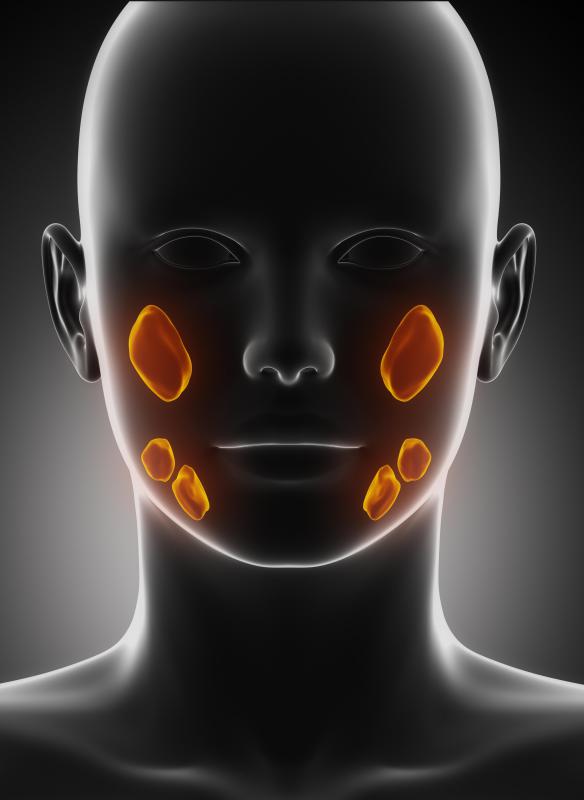At TheHealthBoard, we're committed to delivering accurate, trustworthy information. Our expert-authored content is rigorously fact-checked and sourced from credible authorities. Discover how we uphold the highest standards in providing you with reliable knowledge.
What are Salivary Duct Stones?
Saliva is produced by the salivary glands. Each gland contains ducts which transport saliva from the gland and into the mouth. Salivary duct stones are masses of minerals that have been crystallized and taken shape inside a duct. Stones can range from being very tiny to being large enough to entirely block the duct. If a duct becomes completely blocked, this can cause numerous problems, including significant swelling of the gland.
Salivary stones are listed under the varying types of salivary gland disorders. This particular disorder may also be known as sialolithiasis. There are three major types of salivary glands which occur in pairs. The largest pair are called the parotid glands and the two smaller pairs are known as the sublingual and submandibular glands. Salivary duct stones can potentially form in the ducts of any of these glands.

The ducts of salivary glands do a very important job by transporting saliva into the mouth, which is used to provide moisture and assist in food digestion. For this reason, the formation of a stone can severely hinder a duct's ability to perform its job. The cause of salivary duct stones is generally due to chemicals in saliva crystallizing. If a stone becomes large enough, salivary ducts may be unable to properly drain. This can cause saliva to build inside the gland which can cause a bacterial infection.

A noticeable lack of saliva in the mouth is a common symptom of salivary duct stones. The lack of saliva may cause the mouth to become especially dry. Often, this dryness can make swallowing difficult and opening the mouth may be uncomfortable as well. Some people with salivary stones may experience swelling in the face or neck. In addition, there may also be a considerable amount of pain in those areas.
Frequently, eating certain foods can exaggerate symptoms. For example, extremely sour foods generally increase saliva production. If a person with a large stone eats something sour, saliva production may begin, however, it will be unable to be secreted through the duct due to the blockage of the stone. This upset can cause additional dryness and pain in the mouth.
A sialogram may be used to diagnose salivary duct stones. This is an x-ray examination in which a special dye is injected into the ducts for a specialized view. Some patients may also have regular X-rays performed before undergoing a sialogram. Stones most commonly occur in the submandibular glands and when in this location, they are typically easier to find. Often, submandibular gland stones can be felt by a medical professional on physical examination.
Doctors may be able to flush small salivary duct stones out. Larger stones may require a small surgical procedure for removal. This will typically involve making a small incision to manually remove the stone. Most physicians will decide on the best treatment method for a salivary stone after considering the stone's size and the uneasiness it is causing the patient.
AS FEATURED ON:
AS FEATURED ON:












Discuss this Article
Post your comments